Life in 2019 is a world away from what life was like a century ago. In the early 20th century, people went about their day-to-day lives – from going on dates to taking walks in the park – yet it was completely different from how we would do those activities in the present day.
For one, people were a lot more daring in their activities and they had things like war and the Prohibition constantly on their minds that would’ve affected the way they lived. From pet crocodiles to plunging into Niagra Falls in a barrel, these vintage photographs will show you what life was like in the first half of the 1900s.
“On-line” Dating Was Not What You Think

Back in the ’20s, young lovers dated online or rather, on-a-line. This young couple appears to be having a blast on a pulley ride at a fair in London’s Hampstead Heath in 1922. This early form of recreational zip-lining looks dangerous considering the riders don’t have on any protective gear. They seem to be pretty close to the ground though, and hopefully, they didn’t have to ride that far out.
Aerial cables have been used as transport methods for more than 2,000 years, but it wasn’t until 1739 when steeplejack and ropeslider Robert Cadman first used one as entertainment. Unfortunately, he didn’t survive.
ADVERTISEMENT
This Genius Took Delight In The Simple Things
ADVERTISEMENT

ADVERTISEMENT
“Life is like riding a bicycle. To keep your balance, you must keep moving,” Albert Einstein wrote to his son Eduard in 1930. Indeed, cycling was something Einstein obviously enjoyed, as evidenced by this photo taken of him outside the home of Ben Meyer in Santa Barbara in 1933. Meyer was a trustee with the California Institute of Technology, where Einstein was a visiting professor in the early ’30s.
ADVERTISEMENT
Cycling must’ve been dear to Einstein’s heart. Not only did the first bike ride in 1817 take place in his native Germany, but he also allegedly was riding a bike when he thought of the Theory of Relativity.
ADVERTISEMENT
They Had Impractical Ideas For Weaponry
ADVERTISEMENT
ADVERTISEMENT

ADVERTISEMENT
During World War II, Germany developed the Krummlauf, a curved barrel attachment that was meant to allow soldiers to shoot around corners and other barriers without having to expose themselves in order to return fire.
ADVERTISEMENT
The bent barrel was also equipped with a periscope that allowed soldiers to spot upcoming threats from a safe position. While it seemed like a good idea for them, the Krummlaufs actually didn’t last very long and in fact, would cause some bullets to shatter. They weren’t very efficient either – depending on the angle of the barrel, it was only good for 160 to 300 rounds.
ADVERTISEMENT
Going For A Leisurely Stroll
ADVERTISEMENT
ADVERTISEMENT
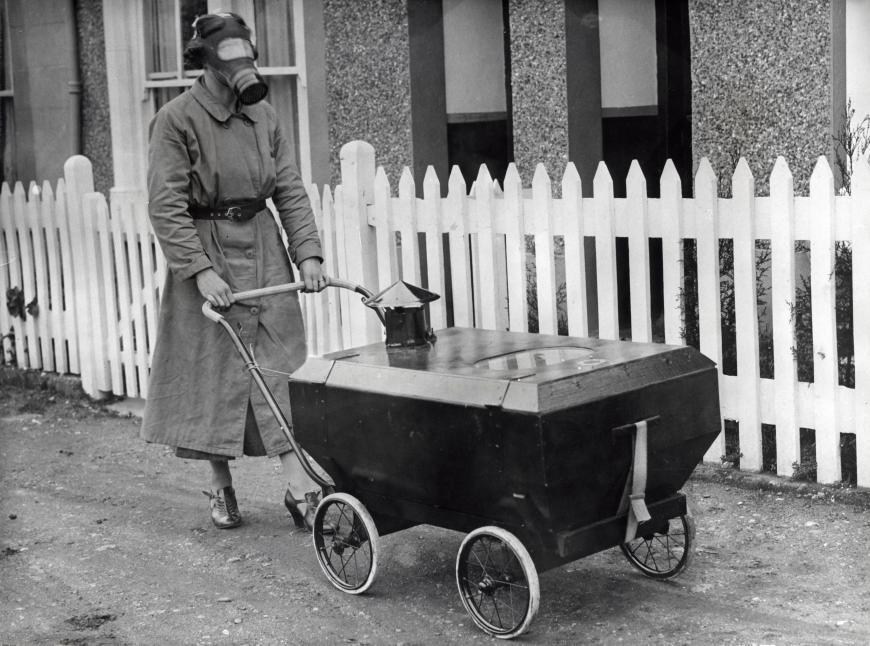
ADVERTISEMENT
On the cusp of the second world war, the threat of an aerial attack loomed over citizens of Europe. Fearing a gaseous air raid, people took extreme precaution in order to protect themselves as they went about their daily activities.
ADVERTISEMENT
This large pram is outfitted with an air-tight, gas-proof lid, that allowed the baby to receive fresh air through a gas filter on top of it. This way, it was safe to take your baby out for a stroll and this woman in Hextable, England is taking safety to the next level by wearing a gas mask herself.
ADVERTISEMENT
They Were Some Real Daredevils
ADVERTISEMENT
ADVERTISEMENT
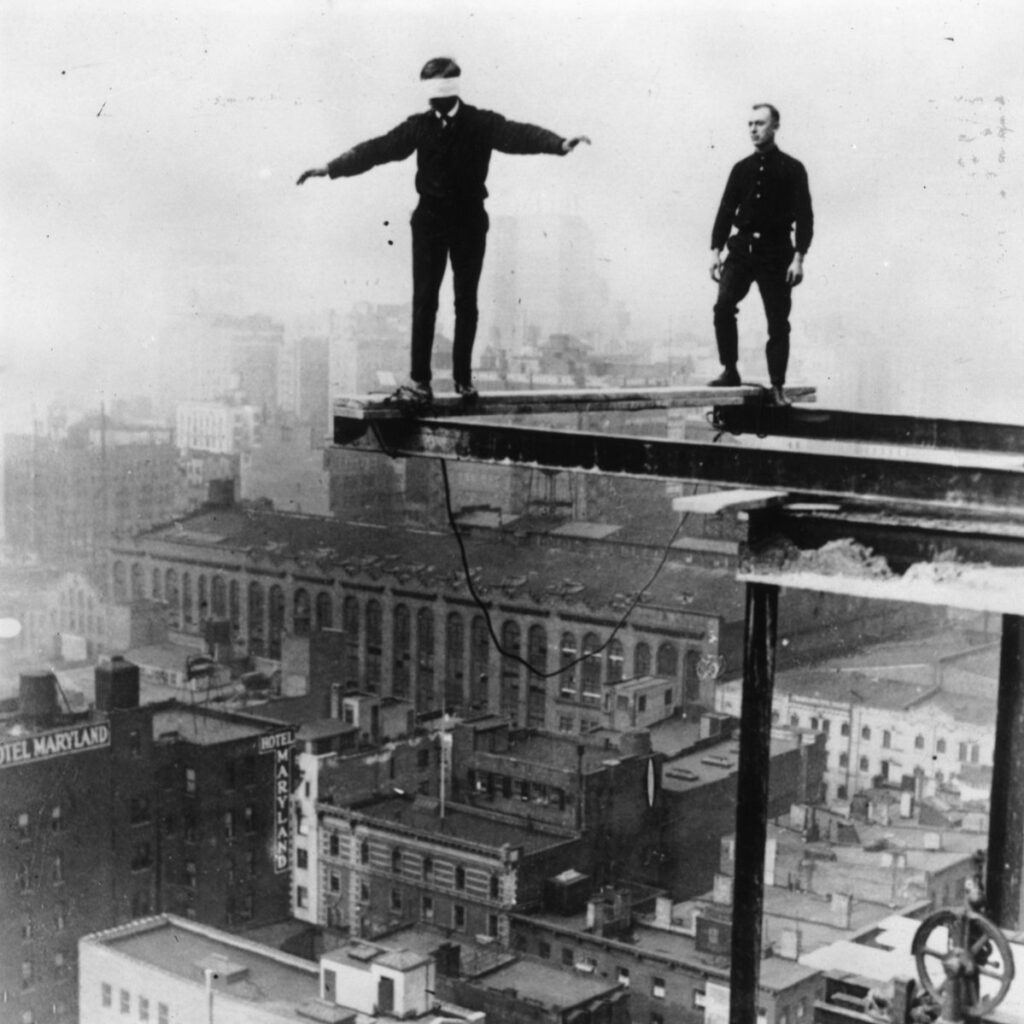
ADVERTISEMENT
This construction worker in New York City decided to pull a daring stunt and walk on a construction girder twenty stories in the air – all while completely blindfolded! This photo was taken in 1925, at a time when construction jobs were abundant as New York City’s most iconic skyscrapers were being built.
ADVERTISEMENT
Cameras were also the hip, new thing back in those days and workers decided to have fun by posing for wild photos in mid-air like this one. Of course, plenty of men lost their lives during this time. It was believed that one man would die for every $1 million spent on a skyscraper.
ADVERTISEMENT
A Boy And His Ray Gun
ADVERTISEMENT
ADVERTISEMENT
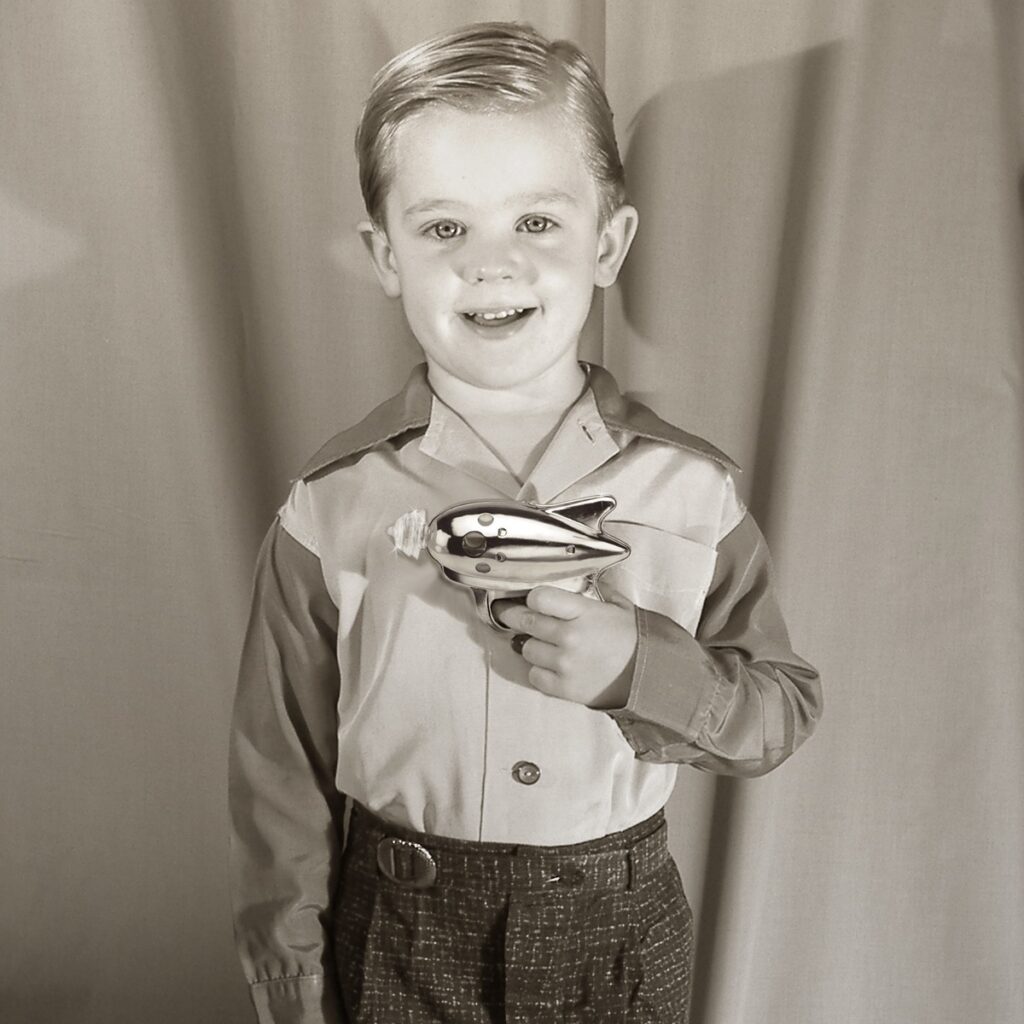
ADVERTISEMENT
We can only imagine what went down behind the scenes of this photo. Based on the boy’s smile, he was likely thrilled to receive the latest and greatest toy of his time: the ray-gun. Mom probably made him stop for a picture before he was allowed to go off and shoot imaginary extraterrestrials with it.
ADVERTISEMENT
Ray guns were popular during the Golden Age of Science Fiction of the early ’40s and were popularized by comics such as Buck Rogers and Flash Gordon. Kids throughout the ’50s and ’60s loved to play with toy ray guns.
ADVERTISEMENT
Walking The Pet Crocodile
ADVERTISEMENT
ADVERTISEMENT
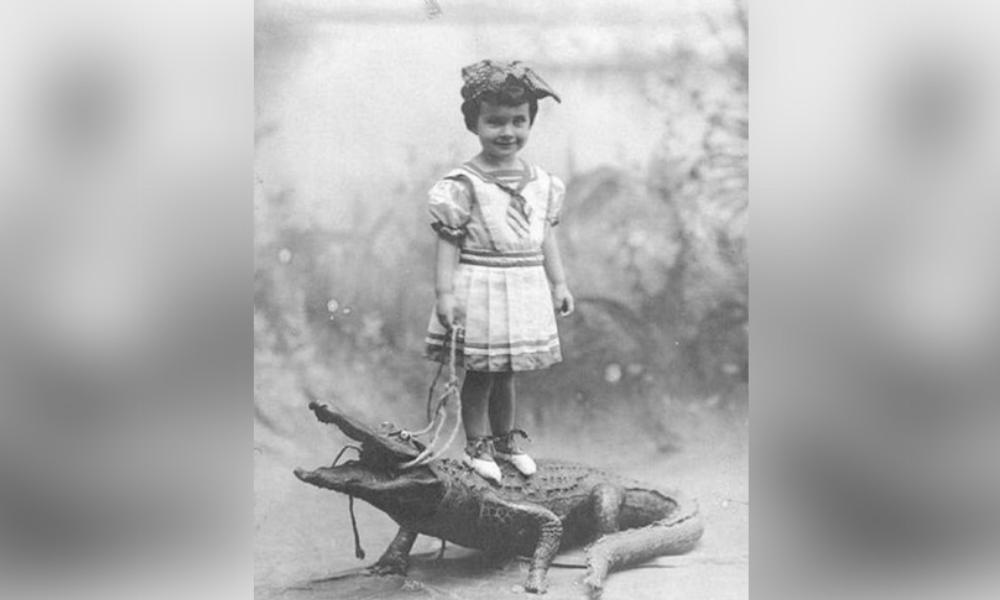
ADVERTISEMENT
This girl from the 1920s is taking her pet crocodile out for a walk or rather, she’s walking on her pet crocodile. She looks completely unfazed by the fact that it’s bearing its teeth! Apparently, owning one of these guys or their close cousins, the alligator, wasn’t abnormal for the time.
ADVERTISEMENT
In fact, there were alligator farms that housed thousands of gators of all ages and sizes. Guests could come to these farms to ride them and some of the animals were even sold to guests. Visitors also regularly handled the animals despite warnings not to.
ADVERTISEMENT
Horse Diving Was A Must-See
ADVERTISEMENT
ADVERTISEMENT
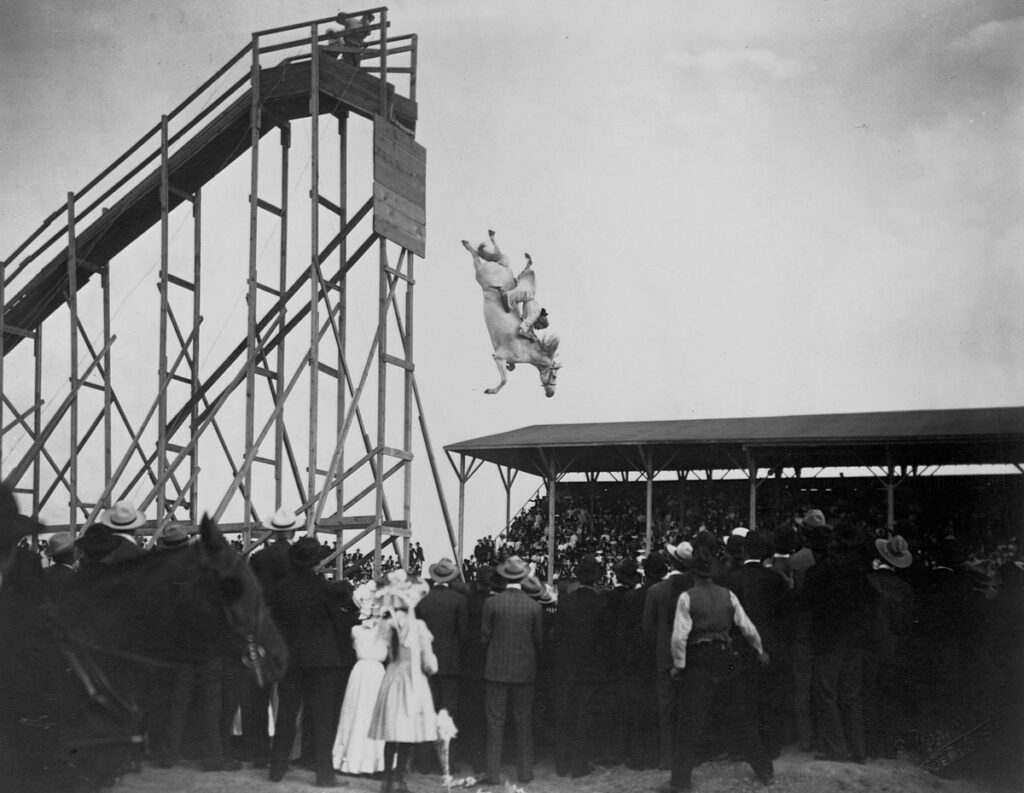
ADVERTISEMENT
These folks are gathered around to witness Eunice Winkless perform one of the most exciting sports at the time: horse diving. In 1905, Winkless performed this stunt for a Fourth of July event. The stunt woman dove from a 50-foot high tower into a small pool all while on horseback.
ADVERTISEMENT
This was by far one of the most daring stunts performed as a part of the Wild West shows that were popular during the early 1900s. Other attractions included mock bison hunts, bronco riding and roping, and of course, marksmanship competitions.
ADVERTISEMENT
Pedal Skating In The Park
ADVERTISEMENT
ADVERTISEMENT
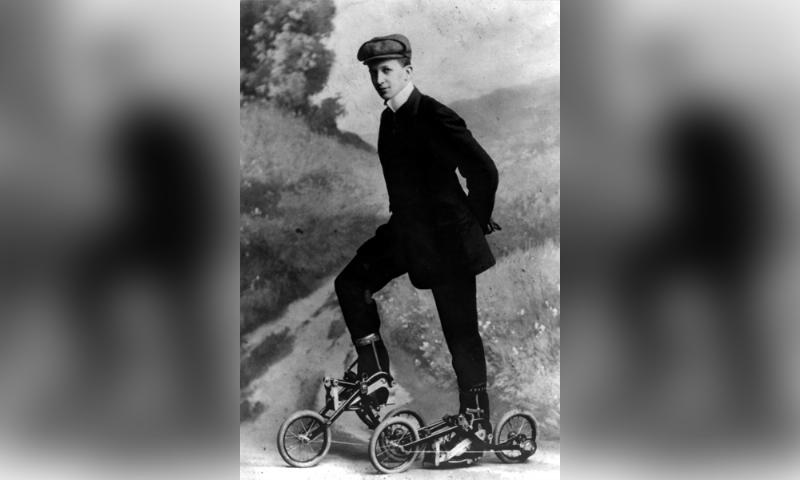
ADVERTISEMENT
Roller skates were invented as early as the mid-1700s. Back then, roller skates were very much like inline skates but were hard to steer and stop, so they weren’t very popular. But in 1913, pedal skates came along.
ADVERTISEMENT
Charles A. Nordling of Suisun, California created this variation on the classic roller skate where the wheels were rotated on a pedal that was pushed by the person who wore them. This supposedly made it easier on the user, who wouldn’t have to use so much energy and could actually manage to skate at a high speed.
ADVERTISEMENT
Walking On A Sea Of Logs
ADVERTISEMENT
ADVERTISEMENT
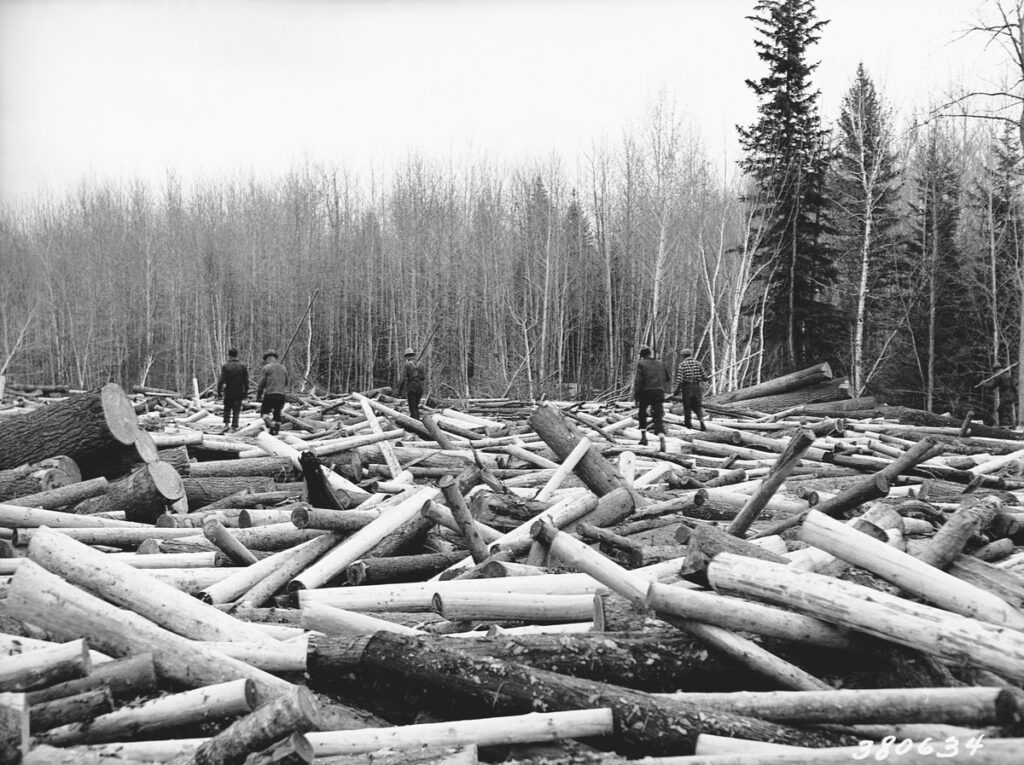
ADVERTISEMENT
These loggers are walking on a pile of logs that float in the middle of a river. This log jam on Minnesota’s Littlefork River is being used to build a loading boom. At the time, booms were used to collect floating logs that have fallen into a body of water due to timbering in the neighboring forests.
ADVERTISEMENT
By 1900, timber in the Midwest was dwindling, so loggers took to the Pacific Northwest. It wasn’t long before resources became scarce but forests continued to get logged at a growing rate.
ADVERTISEMENT
Pigs Could Fly At The Time
ADVERTISEMENT
ADVERTISEMENT
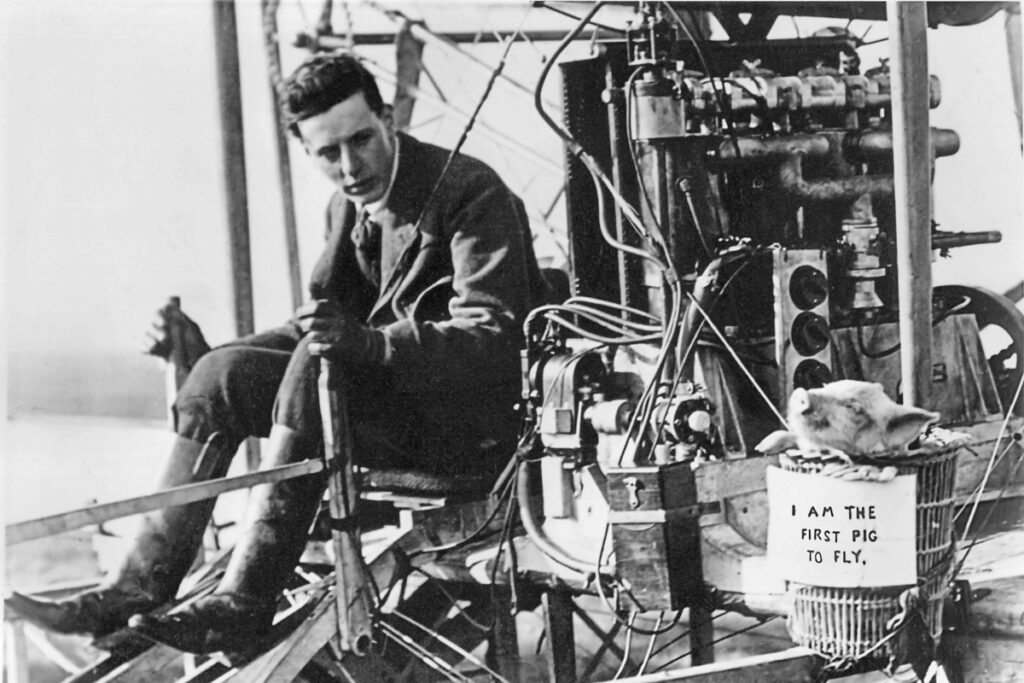
ADVERTISEMENT
Lieutenant-Colonel JTC Moore-Brabazon was a pioneer in English aviation. Perhaps when he was a boy telling people he wanted to fly planes, people scoffed and remarked, “when pigs fly.”
ADVERTISEMENT
Not only was Moore-Brabazon the first Englishman to pilot a heavier-than-air machine under power in England but he was also the first person to qualify as a pilot in the United Kingdom. On October 30, 1909, he also helped a pig fly, proving all of his naysayers wrong. To pull off the stunt, Moore-Brabazon put a small pig into a wastebasket and tied it to the wing-strut of his plane.
ADVERTISEMENT
The Beach Had A Dress Code
ADVERTISEMENT
ADVERTISEMENT
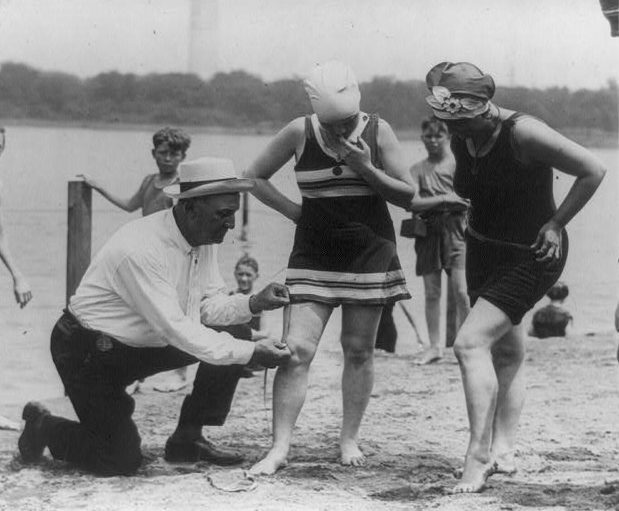
ADVERTISEMENT
These ladies are having their bathing suits measured to see that they comply with the law. In 1922, Colonel Sherrill, the Superintendent of Public Buildings and Grounds in Washington, D.C., issued an order that required all bathing suits worn on the beach must not be more than six inches above the knee.
ADVERTISEMENT
If you broke that law back in those days, a policeman could issue you a warrant. There were even policemen that patrolled local beaches specifically for the purpose of measuring women’s bathing suits.
ADVERTISEMENT
Behind Bars On The Way To Jail
ADVERTISEMENT
ADVERTISEMENT
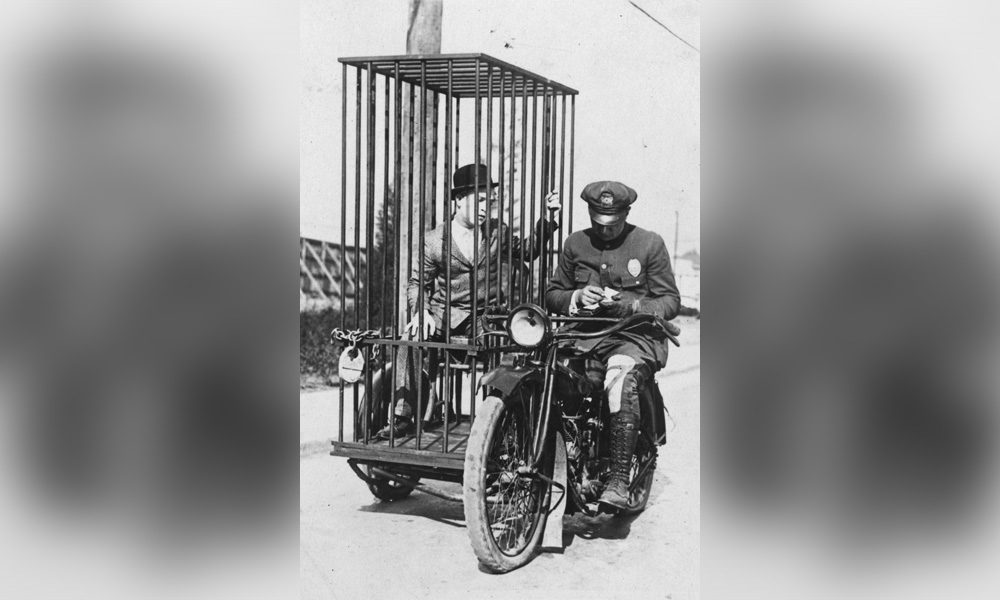
ADVERTISEMENT
In 1924, police forces already began using motorcycles and even had the power to apprehend someone on the spot if they wanted to. This Los Angeles traffic policeman locked up one surly motorist in his sidecar cell.
ADVERTISEMENT
The offender was already behind bars by the time he made it to the precinct. This method obviously didn’t last long. It was pretty dangerous for the person in sidecar cell and most of the time, the policeman wouldn’t even need to use it, so he’d be lugging around extra weight for no reason.
ADVERTISEMENT
Michelin Costumes Were A Hit
ADVERTISEMENT
ADVERTISEMENT
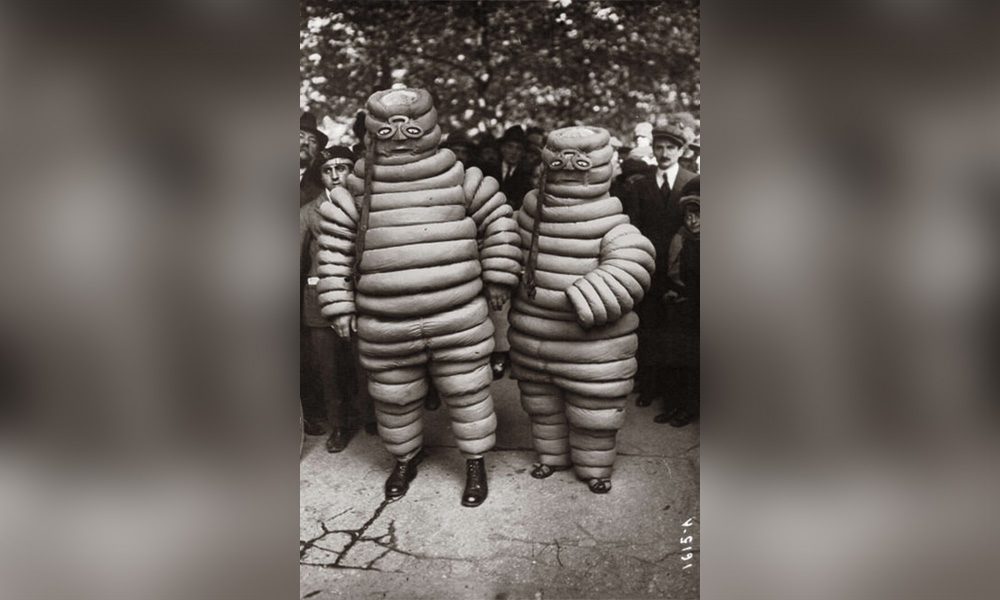
ADVERTISEMENT
The Michelin Man is one of the oldest trademarks in the world. Nicknamed Bibendum, the Michelin mascot debuted in 1894 and has been around ever since. The idea for this rotund mascot came from industrialists Édouard and André Michelin. One day the brothers noticed a stack of tires and Édouard suggested that it looked like the shape of a man with no arms.
ADVERTISEMENT
Four years later, André met French cartoonist Marius Rossillon, who had a rejected image of a large man holding a beer that he had drawn for a brewery. André suggested replacing the man with the tire figure and the rest is history.
ADVERTISEMENT
Before There Was a Limit on Bison Hunting
ADVERTISEMENT
ADVERTISEMENT
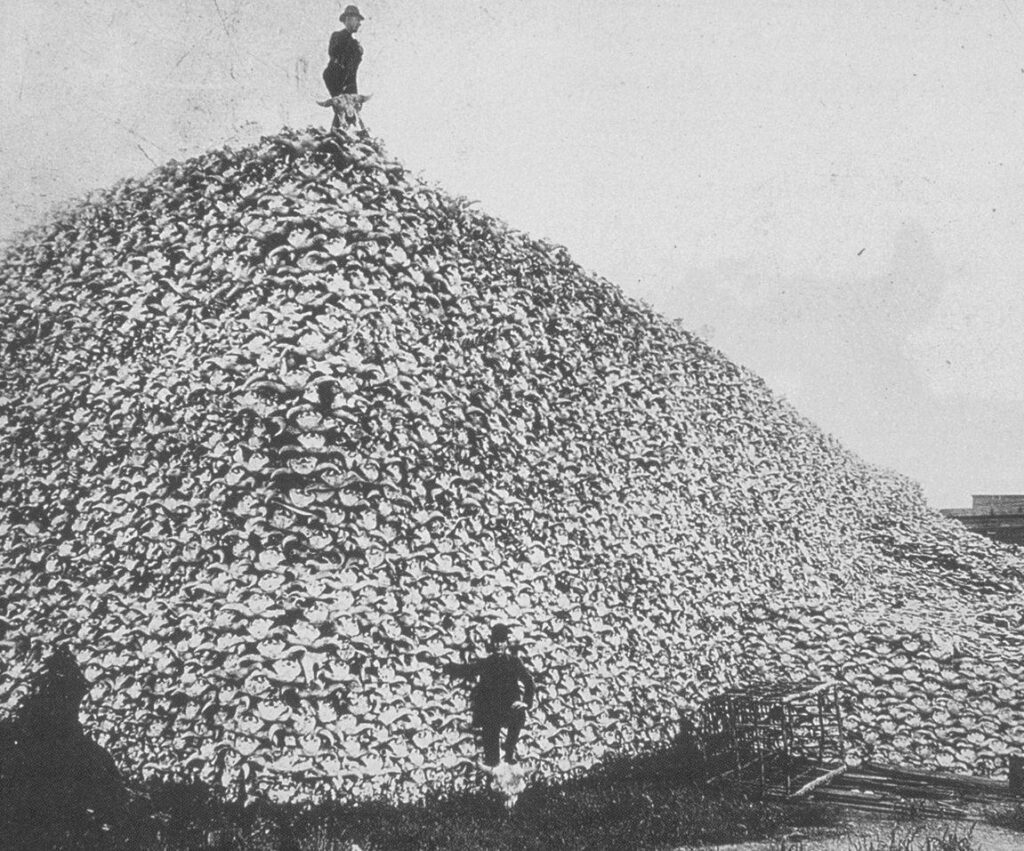
ADVERTISEMENT
Bison was a popular animal to hunt in the U.S. in the 19th century. Tens of millions of bison roamed the country, especially in the Great Plains. Bison are North America’s largest mammal and can reach up to 2,000 lbs in weight.
ADVERTISEMENT
Hunters would freely kill as many bison as possible, as shown in this photo– a stack of bison skulls. However, by the turn of the century, there were only a few hundred left. Soon after, hunting Bison became regulated.
ADVERTISEMENT
They Did Anything For Fame And Fortune
ADVERTISEMENT
ADVERTISEMENT
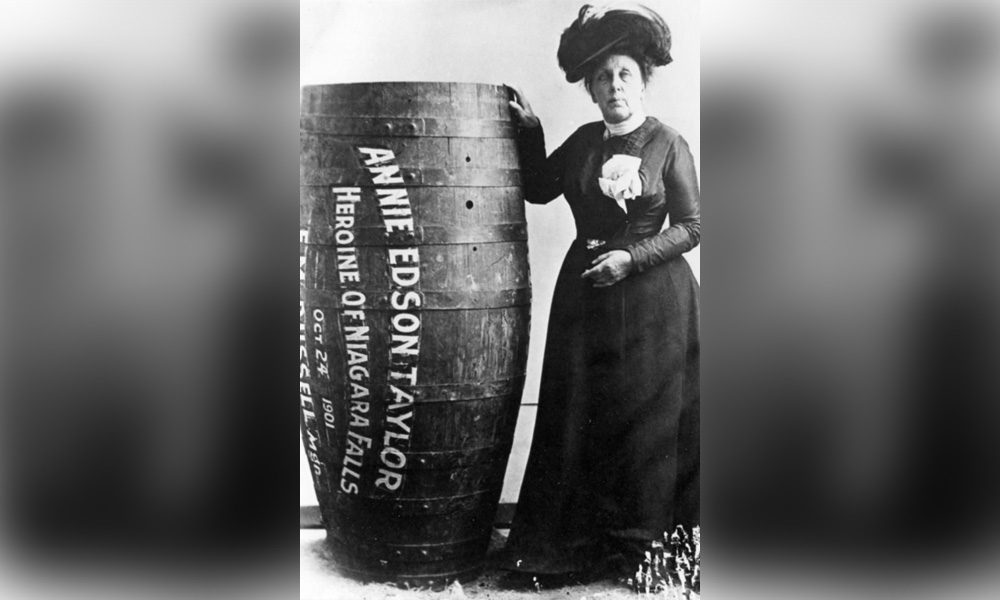
ADVERTISEMENT
On October 24, 1901, Annie Edson Taylor became the first person to ride over Niagra Falls in a barrel and survive. The retired school teacher from Michigan was strapped for cash and decided that the fame from this stunt would help solve that problem.
ADVERTISEMENT
On her 63rd birthday, Taylor got inside a five-foot pickle barrel that was cushioned with a mattress on the inside. She was towed by a small boat to the middle of the Niagra River and cut loose, letting the current pull her over the 177-foot drop. Save for a cut on her head, Taylor survived but her fifteen minutes of fame didn’t last too long.
ADVERTISEMENT
Another Day On The Job For This Young Newsie
ADVERTISEMENT
ADVERTISEMENT
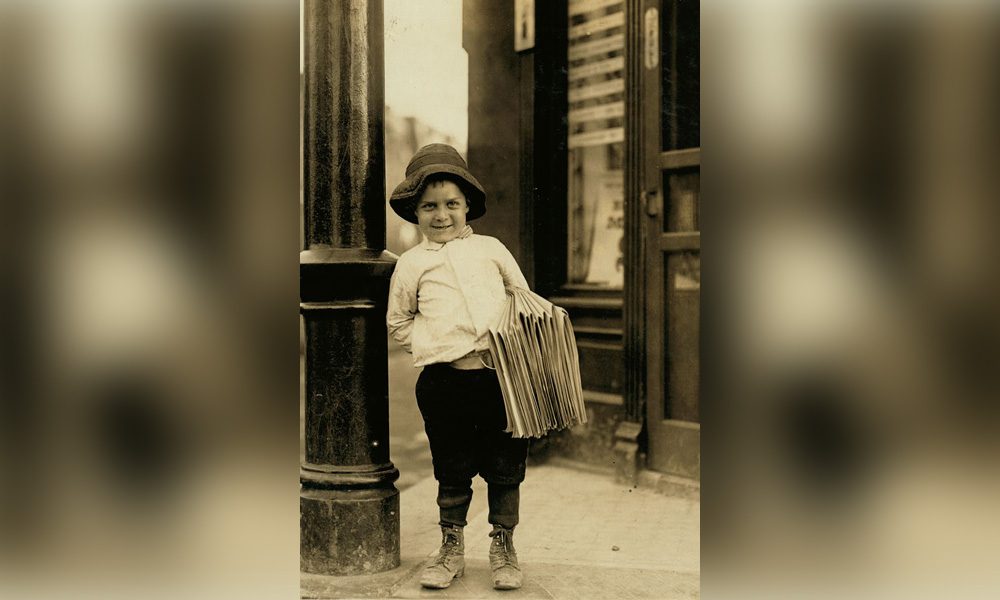
ADVERTISEMENT
This six-year-old newsboy has been on the job for at least a year when his photo was taken on May 9, 1910 in St. Louis, Missouri. Delivering or selling the newspaper was often a youngster’s first job back in those days.
ADVERTISEMENT
While some of them established subscription routes on which they worked as paperboys, others would hawk the papers on the street by yelling out the sensational headlines. Some ambitious newsies often did both. At this time, newsies were the main distributors of newspapers to the general public.
ADVERTISEMENT
Turning Heads With Bare Legs
ADVERTISEMENT
ADVERTISEMENT
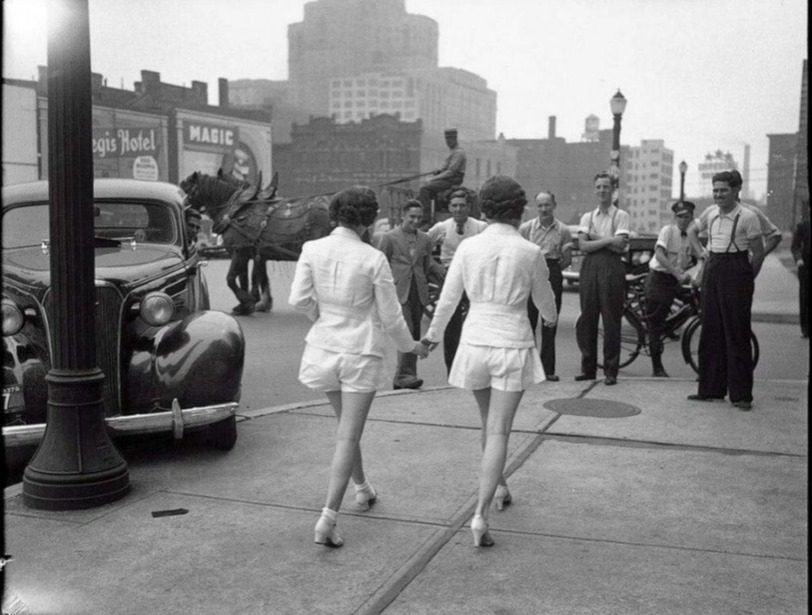
ADVERTISEMENT
These two women are causing a ruckus on the street by walking out in public wearing shorts. In Colonial times, Puritans wanted to prevent people from dressing extravagantly and those ideals have influenced American government for centuries. For the sake of modesty, many towns across America banned the wearing of shorts as early as the 1930s.
ADVERTISEMENT
This photo is allegedly one of the first two women to have worn shorts in public, although that has been disputed. Further photographic evidence of these women show them roaming the city streets as models, so it was likely that this was a staged photo.
ADVERTISEMENT
Where There’s A Will There’s A Way
ADVERTISEMENT
ADVERTISEMENT
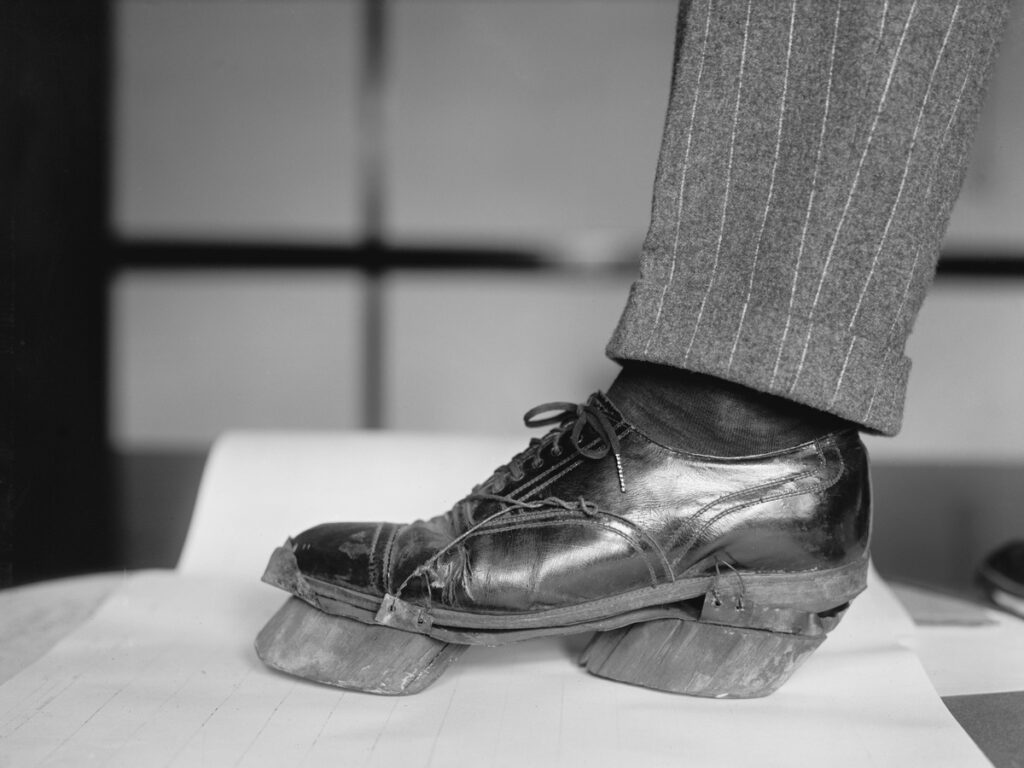
ADVERTISEMENT
This is a photo of a policeman trying on a moonshiner’s cow shoe in Washington, D.C. in June 1924. Despite the prohibition that went on during the ’20s, some people still found ways to whet their whistles. Moonshine was produced and transported illegally throughout America as people looked for ways to drink without getting busted.
ADVERTISEMENT
Some moonshiners would add these attachments to their shoes so that police couldn’t trace their footprints, thinking that they were those of a cow. It was the perfect way to throw a cop off of their trail.
ADVERTISEMENT
Just A Little Sip
ADVERTISEMENT
ADVERTISEMENT
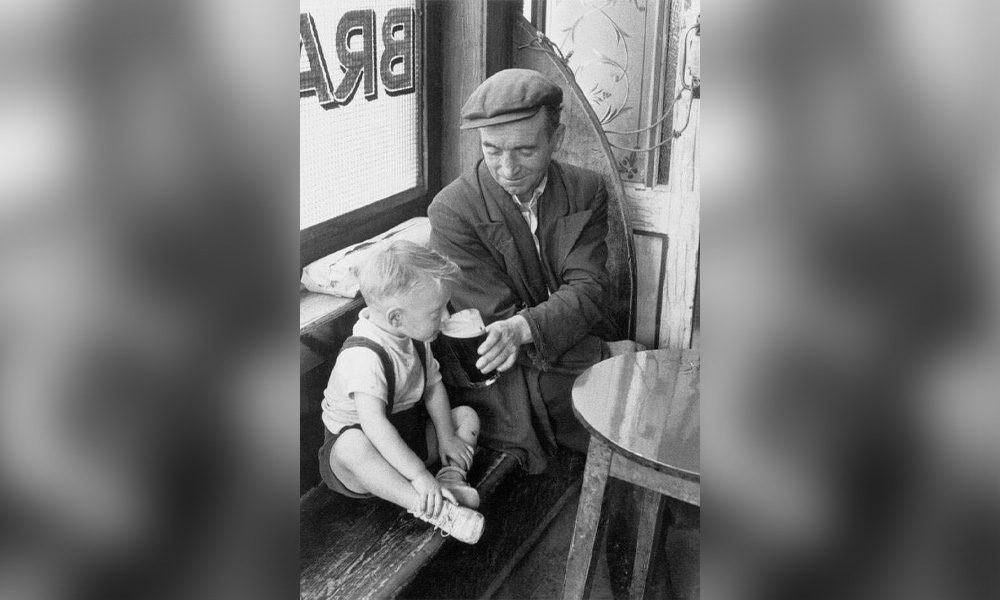
ADVERTISEMENT
In this photo from the ’50s, a man shares a pint with his young son in an Irish pub. Parenting was definitely a lot different then than it is today, considering what some parents would allow their kids to do, such as take a sip of alcohol. Not even safety was a big concern as parents would let their kids ride in the car without seat belts!
ADVERTISEMENT
Some might argue that this little boy is not this man’s son, when in fact, he is sipping the foam off the head of the beer for tips. In those days kids hung out in bars for that very purpose.
ADVERTISEMENT
The Original Therapy Animal
ADVERTISEMENT
ADVERTISEMENT
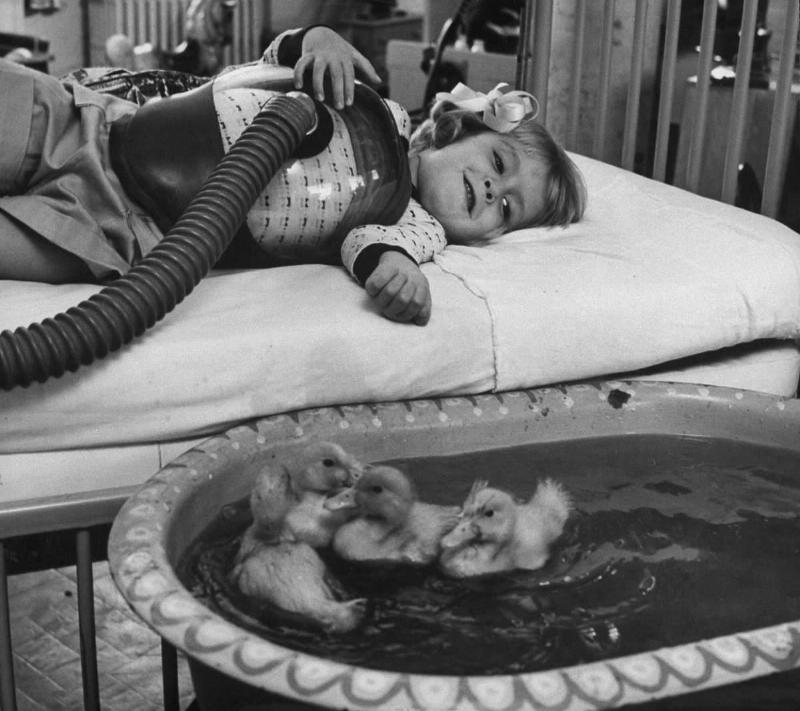
ADVERTISEMENT
It turns out that therapy animals aren’t just a thing of the 21st century! Here you see a little girl in bed on a respirator, smiling as she gazes at the animals in the bath next to her.
ADVERTISEMENT
The pool of baby ducks swimming around was an early example of how animals were used as part of medical therapy.
ADVERTISEMENT
Someone Had To Be The Test Dummy
ADVERTISEMENT
ADVERTISEMENT
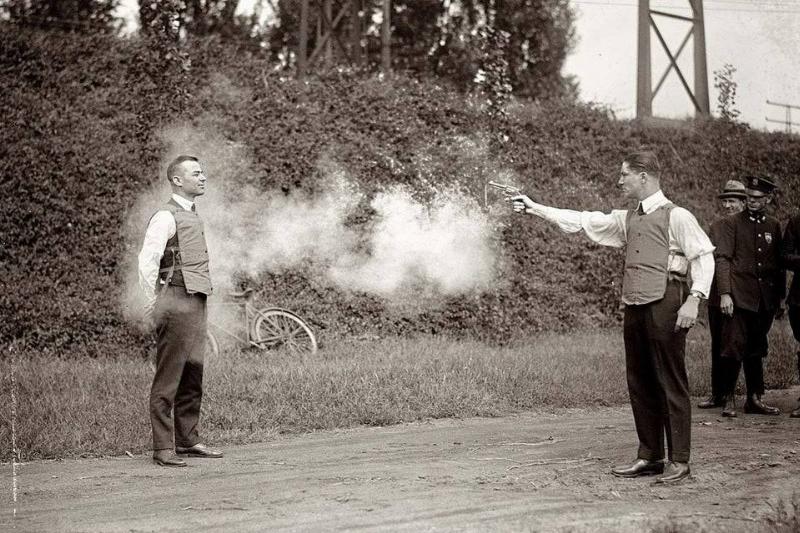
ADVERTISEMENT
While there are test dummies or simulations used to test dangerous products like car airbags during a crash nowadays, someone used to have to be that test dummy.
ADVERTISEMENT
The two men in this photo are showing what testing a bulletproof vest was like in 1923. Safety regulations were clearly not a thing of the past, but rather a thing of the present.
ADVERTISEMENT
This Counted As “Indecent Exposure”
ADVERTISEMENT
ADVERTISEMENT
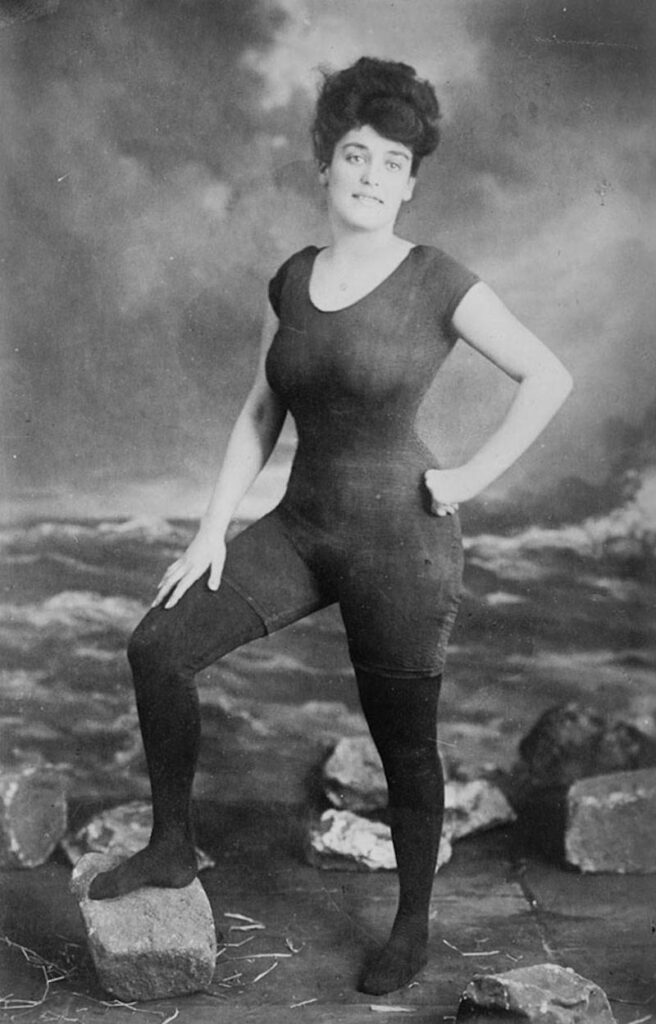
ADVERTISEMENT
In 1907, Australian actress, writer, vaudeville star, and professional swimmer Annette Kellerman stood up as the first woman to promote the right to wear a fitted bathing suit. The bathing suit (if you can even call it that by today’s standards) was quite modest.
ADVERTISEMENT
Despite it being modest, Kellerman was arrested for indecency because of this!
ADVERTISEMENT
Suspending A Baby Out The Window For Their “Health”
ADVERTISEMENT
ADVERTISEMENT
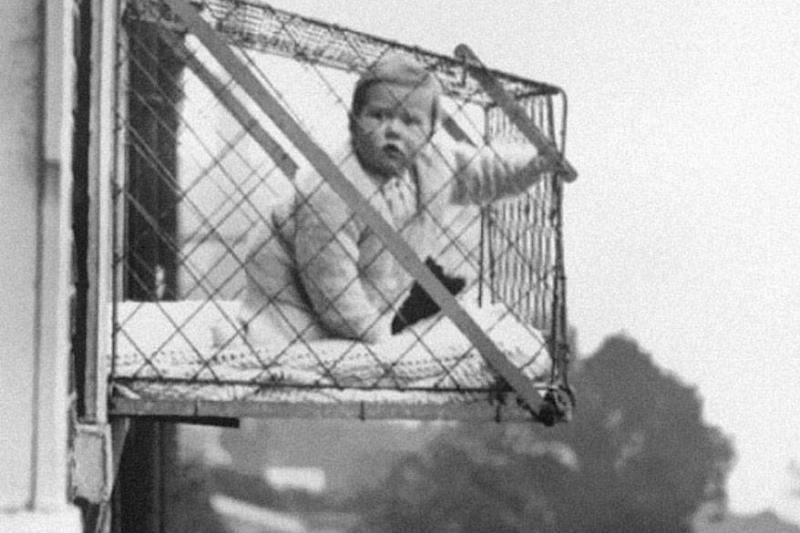
ADVERTISEMENT
The 1930s saw a great rise in popularity of the “baby cage” or “health cage,” which is what’s happening in this photo.
ADVERTISEMENT
The baby cages were designed to ensure that babies who lived in crowded cities like London, England but didn’t have gardens or yards to play in could still be exposed to sunshine and fresh air. Unsurprisingly, this wasn’t a child-rearing tactic that withstood the test of time
ADVERTISEMENT
A Workplace Accident Waiting To Happen
ADVERTISEMENT
ADVERTISEMENT
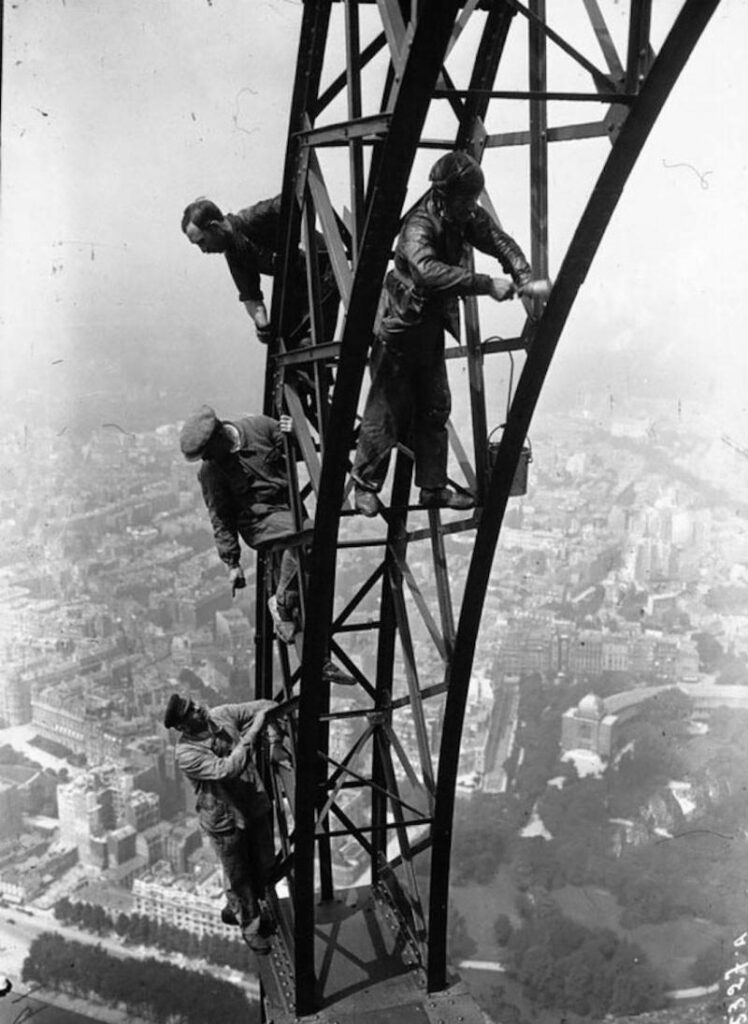
ADVERTISEMENT
If you’ve ever looked up at a structure like the Empire State Building or the Eiffel Tower and wondered how it used to be maintained, this is your answer.
ADVERTISEMENT
These men are climbing up the side of the Eiffel Tower in 1932 to finish up the paint job. With a lack of safety harnesses or any other safety measures, it’s a wonder any man was willing to risk doing this job.
ADVERTISEMENT
Performing A Routine Safety Check
ADVERTISEMENT
ADVERTISEMENT
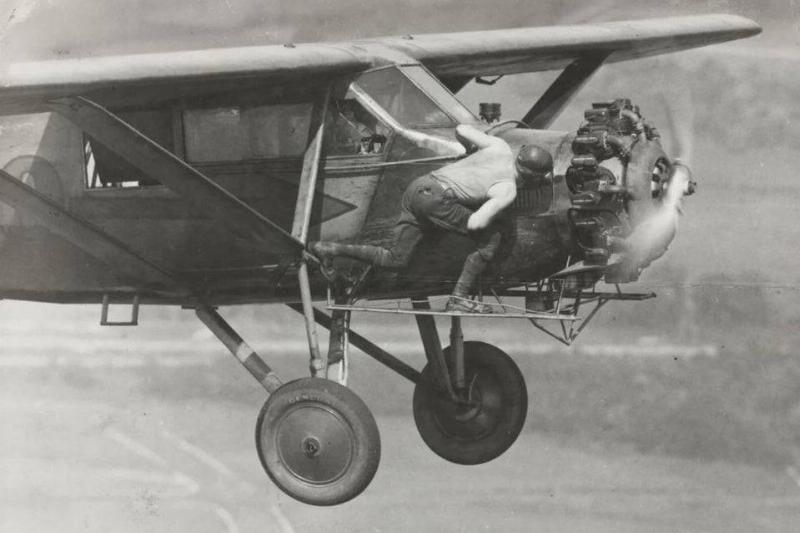
ADVERTISEMENT
He may be doing some safety check-ins on the plane, but whose checking in on him?
ADVERTISEMENT
The Hunter Brothers participated in a 23-day long flight without landing in 1930. During that time, food and fuel were delivered to them by other pilots and airplanes. If they weren’t stopping for food or fuel, they weren’t going to stop for a mechanical pitstop either, so they did the checkups mid-air.
ADVERTISEMENT
Computer Files Aren’t Nearly As Cool As This
ADVERTISEMENT
ADVERTISEMENT
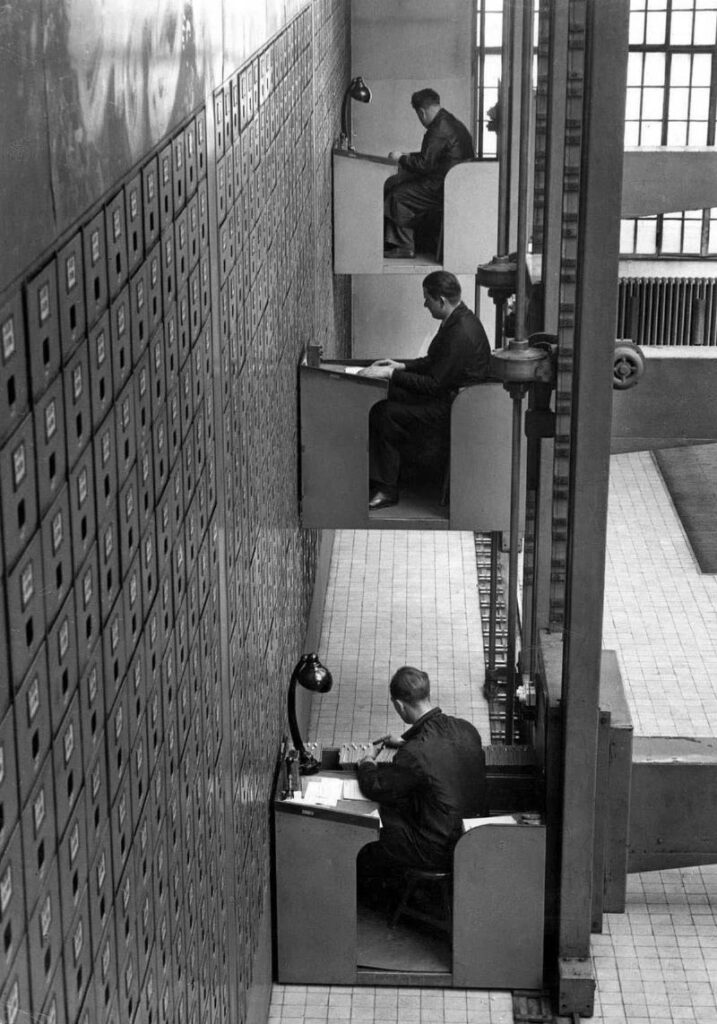
ADVERTISEMENT
The Central Social Institution of Prague (in what was formerly known as Czechoslovakia) was home to the largest vertical letter file cabinets in the world.
ADVERTISEMENT
In 1937, these men were seated at the electric-operated elevator desks which could rise, fall, and move left or right at the push of a button. The cabinets contained over 3000 drawers and stood at 10 feet high. The drawers themselves also open and close electronically.
ADVERTISEMENT
A Little Snow Can’t Stop Christmas
ADVERTISEMENT
ADVERTISEMENT
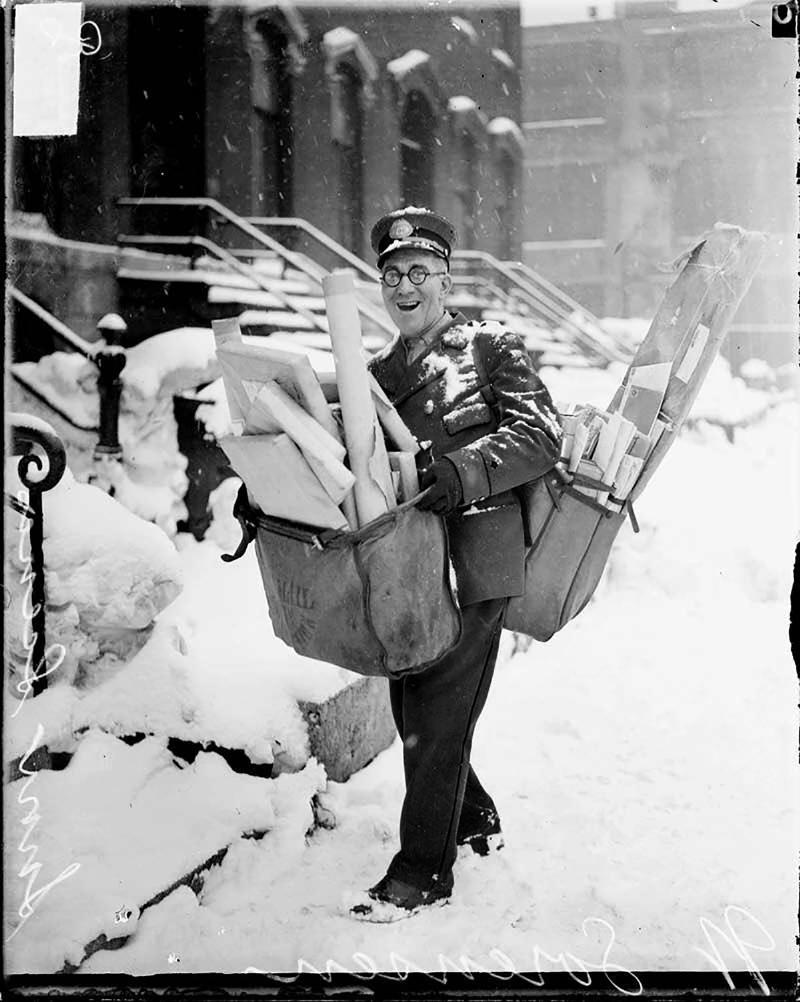
ADVERTISEMENT
There was certainly Fed Ex or Amazon Prime shipping to ensure that Christmas parcels were delivered on time in 1929.
ADVERTISEMENT
This happy mailman poses in Chicago with his heavy load of packages and envelopes, still with a smile on his face after trekking through the snow for who knows how long.
ADVERTISEMENT
Protecting A Great Work Of Art
ADVERTISEMENT
ADVERTISEMENT

ADVERTISEMENT
It doesn’t look like anything valuable or exciting, but that dome is hiding a great work of art.
ADVERTISEMENT
This brick dome was built around Michelangelo’s Statue of David in order to protect the sculpture from bombing during World War II. Despite what was going on around them, someone still took the time to ensure that art such as this piece would be protected.



